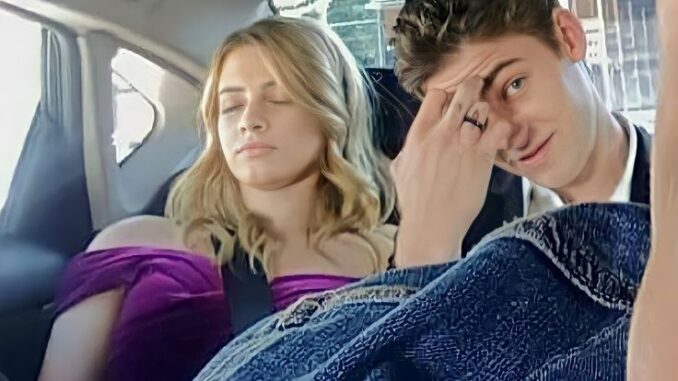
One of the most glaring differences between the book and the film is the loss of Tessa’s inner voice. In Anna Todd’s novel, much of the emotional weight comes from Tessa’s thoughts — her doubt, her love, her trauma. Readers live inside her head, experiencing every heartbreak in real time.
The film, however, lacks that introspective lens. We only see what Tessa says or does, but not what she feels. This shift creates a sense of distance. Some viewers felt the emotional complexity of her character was flattened on screen, making her seem passive or inconsistent — especially during moments where, in the book, she’s deeply conflicted.
Another major criticism of the film adaptation is the absence or simplification of key side characters, who added tension and nuance to the novel’s storyline. For example, Zed, a recurring presence in the book, is almost completely absent in After We Fell. His presence in the novel creates a love triangle dynamic and deepens Hardin’s jealousy — a central element of the couple’s conflict. Without him, the film loses that layer of romantic suspense. Likewise, Steph’s betrayal, a major plot twist in the books, was dramatically reduced in the film series overall. Fans of the novel know that Steph’s actions in the book are shocking and pivotal to the plot. By removing or toning down these darker elements, the film creates a smoother, but arguably less intense, emotional arc.
In the book, Hardin Scott is complex but undeniably toxic — emotionally manipulative, jealous, and prone to violence. Anna Todd portrays him as deeply broken, a product of trauma and insecurity. His redemption arc is long and painful. The movie version of Hardin, while still troubled, is noticeably softer and more restrained. Some scenes are rewritten to reduce his aggression, making him more palatable to mainstream audiences. While this shift was likely intentional to avoid glorifying abuse, it also created division. Many fans appreciated the toned-down version, arguing that it promotes a healthier narrative. Others, however, felt the rawness and realism of Hardin’s journey was lost. As one reader put it: “Hardin in the book made me furious, but also made me believe in growth. The movie Hardin just feels moody.”

One of the biggest challenges for the filmmakers was condensing a 600+ page book into a 90-minute movie. As a result, entire subplots were cut, scenes were compressed, and transitions felt abrupt. For instance, the Mexico trip, a significant bonding moment between Tessa and Hardin in the book, is completely left out. The emotional fallout from Tessa’s father’s relapse is also less explored than in the book, where it provides deep insight into Tessa’s fears and emotional walls.
In Anna Todd’s novel, After We Fell ends with a cliffhanger that leaves readers emotionally wrecked — Tessa discovers a life-changing secret about her family and distances herself from Hardin in a way that suggests their relationship may not recover. The movie takes a more muted approach. While the tension remains, the sense of urgency and danger is scaled back. The decision likely stemmed from a desire to stretch the story across future films (After Ever Happy and After Everything), but it diluted the impact of the ending for many fans.
At its core, the division comes down to expectation vs. adaptation. Readers fell in love with the raw, messy, deeply personal world Anna Todd created. They wanted to see it replicated on screen with the same emotional weight and detail. But filmmaking is a different medium — one that requires compromise, condensation, and reinterpretation. Not everything in a novel translates to film. Internal monologues become facial expressions. Subplots get cut for pacing. Controversial content gets softened for ratings. Still, that doesn’t erase the disappointment for fans who wanted more. For them, After We Fell the movie is a beautiful shadow of a much darker, deeper story.
On the other hand, many new fans who discovered the series through the movies appreciate the cleaner, more cinematic narrative. To them, the heart of the story remains intact — a tale of imperfect love, redemption, and passion. Book lovers will always carry a version of Tessa and Hardin in their hearts that differs from what they see on screen. But perhaps that’s the magic of After: it allows room for both. For those who want emotional chaos and complexity, the book delivers. For those seeking visual romance and fiery chemistry, the film satisfies.
